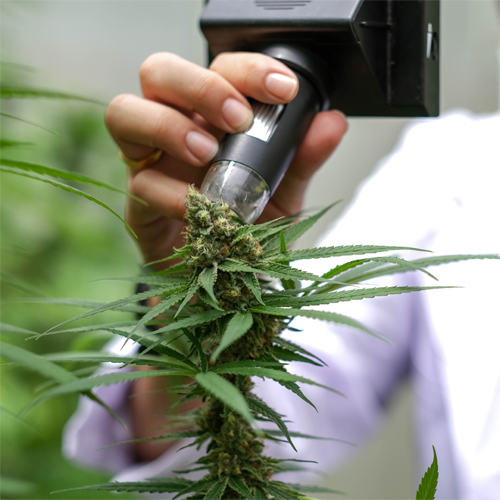What Is The Difference Between Hemp And Marijuana
With the rapidly changing laws surrounding hemp and marijuana products on both a state and federal level, the lines seem to blur. This creates confusion for many consumers, especially in states where it is legal for adults to purchase both. But despite their differences, there are clear cut differences to help consumers and businesses differentiate between the two branches of the cannabis plant.

What is Hemp?
Under the 2018 Farm Bill signed by President Trump, hemp is defined as “any cannabis plant, or derivative thereof, that contains not more than 0.3 percent delta-9 tetrahydrocannabinol (“THC”) on a dry-weight basis”.
Hemp has been utilized as a medicinal, agricultural, and textual commodity across hundreds of different cultures for thousands of years. From the ancient Egyptians to the Chinese Empire to Tudor England’s powerful navy, hemp has played a role throughout the entirety of our history.
Modern Hemp farmers have taken practices that have been used for generations and revised them to open up new and exciting pathways for this incredible and versatile plant. Through genetic selection and careful breeding, growers have been able to cultivate hemp strains ideal for various uses.
Some strains are ideal for CBD extraction, while others are more fit for minor cannabinoid extraction (CBN, CBG, etc.). On the other hand, some strains are bred for fiber production, a niche sector of the industry that is in high demand.
What is Marijuana?
Marijuana is considered any cannabis plant with more than 0.3 percent delta-9 tetrahydrocannabinol. While federally illegal, state legality differs. At the time of this writing, more than half of US states have some form of legal cannabis laws in place.
Unlike hemp, marijuana is best known for its psychoactive properties due to its high THC potency. Marijuana also contains CBD and other minor cannabinoids like CBN and CBG, though in much smaller quantities than hemp. Potency and cannabinoid production vary based on strain, nutrients, stresses on the plant, and other factors.
How are Hemp and Marijuana Different?
Make no mistake, marijuana and hemp look very similar. One could even go so far as to call them cousins. However, some key differences separate the two.
First and foremost is potency. As mentioned previously, the THC content is drastically smaller in hemp when compared to marijuana. According to the 2018 farm bill, legal hemp cannot have over a 0.3 percent THC potency. Marijuana, on the other hand, is often bred to produce a higher THC potency.
Second, strains differ between the two subsections of the cannabis plant. While some hemp strains may share similar or even identical names with marijuana strains, they are two separate sets of genetics. Over the years, selective breeding has pushed the two subsections further and further apart from one another.
Third, legal rules and regulations create (mostly) clear definitions between the two. Under federal law, hemp is legal within the defined boundaries, while marijuana remains illegal. However, state laws vary and create guidelines for both industries.
State laws and regulations surrounding the two forms of cannabis can appear like a tangled mess that can be hard to understand. The easiest way to determine the legality of both hemp and marijuana where you live is to reach out to the regulatory body that oversees the hemp or marijuana program in your state.
Two Plants, One History
Even though hemp and marijuana are unique plants in their own right, they both share a colorful and interesting history. For thousands of years, humans have used the cannabis plant to help meet many different needs. Modern laws and selective breeding may have split the two into different subsections, but each is unique in its own way.





